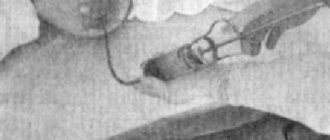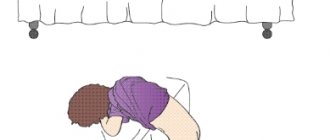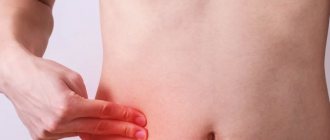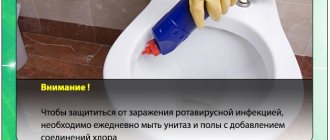An enema is an unpleasant and rather intimate procedure. However, there are few people in the world who have not had to go through it. And when the need arises for performing an enema, it is important to be able to do it correctly. Otherwise, it will turn out to be useless, and sometimes even harmful.
There are mainly two types of enemas:
- Medicinal. When setting them, microenemas with a volume of up to 100 ml are used. With their help, a solution of drugs is introduced into the rectum and sigmoid colon, which must be absorbed.
- Cleansing. The liquid is introduced in a volume of 1.5-2 liters using an Esmarch mug.
There are quite a few indications for using an enema. These are diseases such as constipation, intoxication, proctitis, intestinal dysbiosis, prostatitis, diarrhea, dyspepsia and so on. Each disease has its own method of administering an enema. In addition, when prescribing this procedure, the doctor takes into account the condition of each individual patient. So, for people suffering from hypertension, edema, intracranial pressure, the doctor prescribes a so-called hypertensive enema - with a hypertonic solution of table salt or magnesium sulfate.
Cleansing enema - indications
A cleansing enema is indicated in several cases. The procedure has one goal - to cleanse the intestines of feces.
✔ The procedure is carried out for persistent constipation.
✔ An enema is given to remove toxic substances in case of poisoning.
✔ A cleansing enema is necessary before surgery.
✔ The procedure is prescribed before childbirth.
✔ Before X-ray examinations of the digestive tract.
✔ A cleansing enema is prescribed for endoscopic examinations of the colon.
Cleansing enemas are contraindicated for acute inflammatory and erosive-ulcerative lesions of the colon mucosa. You cannot give a cleansing enema for some acute surgical diseases of the abdominal organs. This is acute appendicitis, peritonitis. A cleansing enema is also contraindicated for gastrointestinal bleeding, disintegrating colon tumors, and in the first days after surgery in the abdominal organs. An enema is also contraindicated in cases of severe cardiovascular insufficiency.
Scheme for colon cleansing with enemas
There is a developed scheme for performing cleansing enemas before starting any treatment or in parallel with it. Cleansing with enemas according to the scheme cleanses the body of toxins. Before starting treatment for any chronic skin disease, a cleansing enema is necessary.
Colon cleansing with enemas is carried out according to the following scheme
| A week | Frequency of enemas |
| 1 | Weekly |
| 2 | In one day |
| 3 | After two days |
| 4 and all subsequent ones | Once a week |
Esmarch's irrigator
Esmarch's irrigator.
Photo: Social networks A cleansing enema is given using a special rubber or glass Esmarch mug. Esmarch's mug is a special tank with a hole with a volume of one to two liters.
A special rubber tube about one and a half meters long is attached to the mug. At the end of the tube there is a special rubber or plastic tip. There is also a special tap at the end of the tube, with which you can regulate the flow of water from the mug into the rectum.
How much water is required for an enema?
For a cleansing enema, an adult needs from one to one and a half liters of warm water. Recommended water temperature is from 25-35°C.
To stimulate contractions of the colon during atonic constipation, you can use water at a lower temperature - from 12 to 20 °C.
If it is necessary to relax the smooth muscles of the intestines during spastic constipation, you need to use water at a temperature of 37 to 42°C.
To enhance the cleansing effect of the procedure, you can add 2-3 tablespoons of glycerin or any vegetable oil to the enema water. You can dissolve one tablespoon of baby soap shavings in water.
Technique and features of giving an enema to a child
An enema is done using a syringe.
The rules for administering an enema to a child state that for children under 3 years of age, and even more so for infants, such a procedure can only be done as prescribed by a doctor.
This is explained by the fact that in early childhood, stool retention is not in all cases associated with digestive disorders. The child may have serious surgical pathologies in which an enema is strictly contraindicated.
A cleansing enema is given to a baby using a syringe, preferably with a soft rubber tip. Before starting the procedure, the mother should wash her hands well with soap and boil the pear for 30 minutes. After this, the syringe must be squeezed so that the air comes out, lower its end into the solution prepared for the enema and, slowly unclenching it, collect the required amount.
Also, before carrying out, you should lubricate the tip of the syringe with vegetable oil or Vaseline.
For atonic colitis, the water in the syringe should have a temperature of about 20 degrees, and for spastic colitis - about 38. To enhance the effect, you can add 2 teaspoons of purified glycerin or vegetable oil to the water. To administer an enema, the child should be placed on an oilcloth covered with a diaper and his legs should be raised up.
If the child is older than one year, he must be placed on his left side and his legs tucked towards his stomach. Then you need to release the air from the syringe by lightly pressing the balloon. Having carefully spread the child’s buttocks, you need to insert the tip of the syringe through the anus into the rectum 2 cm. Squeezing the syringe slowly and evenly, inject the solution into the rectum.
It is better to do this only while inhaling. If the child cries, the procedure should be temporarily suspended. Upon completion of the injection of the required volume of liquid, you should carefully remove its tip without unclenching the syringe. The child’s buttocks should be kept squeezed for 1-2 minutes so that the liquid is retained a little.
Then, for about 10 minutes, the child’s position should be changed so that the liquid is evenly distributed throughout the intestines. After this, the child empties into a diaper or potty.
At the end of the procedure, the child needs to be washed. The syringe should also be rinsed well, dried and placed in a closed container for storage. Next time, before using it, you also need to boil it for half an hour.
How to give an enema at home - algorithm of actions
✔ Pour the required amount of water into Esmarch’s mug, open the tap and fill the rubber tube, displacing the air from it. Lubricate the tip of the tube with Vaseline. Close the tap and hang the mug above the level of the bed on which the patient will lie.
✔ The patient should undress and lie on the bed, turning on his left side. Legs need to be bent at the knees and pulled towards the stomach. In this position, the anus is more accessible for insertion of the tip. A medical oilcloth should be placed under the patient’s buttocks; one edge of the oilcloth should be lowered into the pelvis.
✔ With the first and second fingers of the left hand, spread the patient’s buttocks, and with the right hand, using careful rotational movements, carefully insert the tip of the tube lubricated with Vaseline into the rectum to a depth of 10–12 cm.
✔ At the beginning of inserting the tip, insert the first 3-4 centimeters of the tip towards the patient’s navel. Then turn the tip according to the lumen of the rectum and continue insertion parallel to the coccyx.
✔ After inserting the tip, you need to open the tap and introduce liquid, raising the mug to a height of up to one meter.
✔ If water does not flow, you need to push the tip back a little and increase the water pressure, while raising the mug higher. If the patient complains of pain in the colon, reduce the pressure.
✔ After completing the fluid administration, the patient must be patient and refrain from bowel movements for 5-10 minutes.
Due to the stimulation of colon peristalsis, when administering an enema, the lower intestines are emptied of feces. We can say that a cleansing enema is a simple and painless cleansing of the intestines.
Types of enemas
Cleansing enema Cleansing enemas are used to liquefy and remove gases and contents of the lower parts of the colon. The injected liquid has a mild mechanical, chemical and thermal effect on the large intestine, which enhances its peristalsis, dilutes stool and promotes its rapid and easy excretion. Siphon enema Siphon enema is used for repeated intestinal lavage in cases where a cleansing enema does not bring the desired result. The principle of the siphon enema is based on the law of communicating vessels, causing rhythmic contraction of the intestinal walls. Medicinal enema A medicinal enema is used to inject a small amount of medication into the patient's rectum. As a rule, these are sedatives, sleeping pills, and anti-inflammatory drugs. However, recently such enemas are used less and less, since most medications are now available in the form of suppositories. In the case of using a medicinal enema, a preliminary cleansing enema is required. Nutrient enema Nutrient enema is used when it is necessary to introduce nutrients through the rectum. In the lower part of the large intestine, proteins, various vitamins, amino acids, glucose, and aqueous solutions are absorbed, and therefore this method is also used in artificial nutrition of patients. Diagnostic enema This type of enemas is used to confirm or refute the presence of certain diseases in a patient. Diagnostic enemas include contrast enemas, which are done for x-ray examination of the large intestine. In this case, radiopaque contrast agents are injected into the large intestine.
How to give an enema to a child
The algorithm of actions when performing the procedure on a child differs significantly from giving an enema to an adult. A cleansing enema is a useful procedure, but its effect depends on the amount of water introduced, the pressure of the incoming fluid, the temperature of the water and the speed of its administration.
Without consultation with the doctor, in case of acute abdominal pain, an enema is contraindicated for a child. Enema devices are disinfected by boiling after each use.
✘ For children under 3 years of age, an enema is given with a rubber balloon, that is, a medical bulb.
✘ For children in the first months of life, use canister No. 2, it is designed for 50 ml.
✘ For 3-11 month old babies, use a cylinder No. 2.5, it is designed for 100 ml.
✘ For children aged one to three years, balloon No. 4 is used. Its capacity is 170 ml.
✘ For older children, an enema is given using a special device: an irrigator. This is a rubber bag or kettle to which a tube with a rubber or plastic tip is attached for safe insertion into the rectum. The length of the tube is up to one and a half meters. The higher the irrigator is raised during the procedure, the higher the pressure of the injected fluid. The recommended height for lifting is from 0.5 to 1 meter.
What do you need to perform an enema?
Esmarch's mug will help give your baby an enema.
To give an enema, your child will need:
- oilcloth;
- diaper;
- a set of syringes;
- Esmarch's irrigator;
- pot;
- solution for administration;
- thermometer for water.
An enema syringe looks like a pear-shaped rubber can with a rubber or plastic tip. For different ages, syringes of different volumes are used - from 30 to 360 ml.
How much water is needed to give a child an enema?
Medical pears.
Photo: Social networks Infants are given 50 to 100 ml of water. Children from one to five years old: 150 to 300 ml of water. Children aged six to fourteen years tolerate the introduction of 300–700 ml of boiled water well.
Liquid should be injected into the rectum slowly, without a sudden increase in pressure. In accordance with the doctor's recommendations, a cleansing enema may contain additives in the form of table salt and baking soda. The recommended dose is 0.5–1 teaspoon per glass of water.
An enema with only water is most often not prescribed for children. Your doctor may recommend adding vegetable oil: 1–4 tablespoons of vegetable oil per 0.5–1 cup of chamomile tea. The water temperature can fluctuate between 27-38 °C.
How does the volume of enema solution depend on the age of the child?
The volume of solution for infants is 30-60 ml.
The age of the child and the type of enema affect the required amount of solution administered. So, if the enema is a cleansing one, then you can enter:
- newborn – 25 ml;
- infant up to 6 months – 30-60 ml;
- child from 6 to 12 months. – up to 150 ml;
- for a baby aged 1-2 years – up to 200 ml;
- from two to 5 years – up to 300 ml;
- child aged 5-10 years – up to 400 ml;
- from 10 years – 500 ml.
When performing a laxative enema, you can use 5-10 ml of purified glycerin or 30-150 ml of vegetable oil, the dose of which will be indicated by the doctor. For inflammatory processes in the intestines, 10-30 ml of oil is used for therapeutic oil enemas. Its dose and type should also be discussed with your doctor. A hypertensive enema involves the administration of about 30 ml of saline solution.










